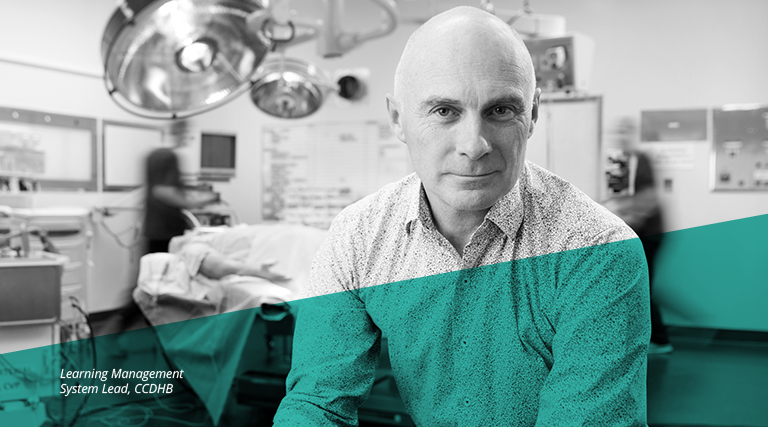Anyone who has worked in the healthcare industry in recent years knows the immense challenges faced by this crucial sector. At the same time as many populations are ageing and facing increasingly complex health issues, healthcare organisations are also finding their budgets squeezed and are struggling to plug the gap left by healthcare workers leaving the sector in their droves, driven out by low wages, long working hours and uncomfortable working conditions.
But of course, giving up on the healthcare sector simply isn’t an option. In the absence of extra budget appearing from nowhere, L&D has a vital role to play in improving the quality and consistency of care globally, whether that’s helping to retain staff, boost learner engagement, improve motivation or raise standards across the board. It’s up to us to play our part in supporting healthcare organisations – so what do we need to know about, and importantly, what can we do to help avoid a global healthcare disaster?

Securing safe, fast access to life-saving information
A key issue for healthcare workers is that IT systems in these organisations are often outdated, clunky and slow – far from ideal when you need access to life-saving information in a hurry. Removing barriers to this information should be a key concern for L&D teams without compromising security and patient confidentiality. In the absence of a big, expensive overhaul of the entire IT infrastructure, it is crucial for L&D to work closely with the IT team to identify what’s possible, what isn’t and how to make the systems work with them, not against them.
The L&D approach: It’s up to L&D to find smart ways to connect healthcare workers to the information they need when they need it. The rapid transfer of knowledge is essential in a sector where things can change literally overnight. However, that doesn’t mean cutting corners – it’s important to bear in mind the vital data protection laws in place around patient information and find ways to support both employees and patients alike with the learning technology they choose. Patient confidentiality must always be a priority, so selecting secure systems and ensuring employee compliance with data protection laws is key.
44% of organisations in high-consequence industries, like healthcare, do not feel thoroughly prepared for a compliance audit. – Compliance Training 2017, Brandon Hall
Invest in efficiency-boosting medical technology
Technology has a huge impact on the healthcare sector – not just in terms of the IT infrastructure, but also the actual medical technology. Evolving IT infrastructure and medical technology go hand in hand, with greater integration between the devices people use to manage their care and the systems used by healthcare providers. For instance, the current trend for self-monitoring and self-managed care means that many patients rely on their medical equipment and devices talking to their healthcare team’s systems to ensure that they remain on track with their health.
The L&D approach: The L&D implications of introducing pioneering new treatments and technologies into the mix for patients include the fact that L&D professionals working in healthcare must be able to equip employees (and often, the patients themselves) with a lot of information very quickly. For instance, when the UK’s NHS introduced flash glucose monitoring for patients with type 1 diabetes in late 2017 (alongside traditional fingerprick blood glucose monitoring), this required a period of rapid upskilling and training, not just for medical workers but also for the patients who would be using this new technology. This was delivered to end users in face-to-face training sessions and online via an LMS and knowledge portal, ensuring that everyone was able to maximise the value of the investment in this technology. Creating an extended enterprise LMS to deliver this type of training not only ensures a consistent learning experience, but also means that barriers to this important information are lowered for better patient outcomes and better patient/healthcare team relationships.
Give power to the people
The consumerisation of healthcare is massively disruptive for a sector so focused on the expert/patient relationship. However, in a world where access to good-quality healthcare is only going to increase in the future, the most effective approach could well be to continue down this path. More self-diagnosis, more self-management and less time spent using valuable healthcare resources could help ensure that resources are allocated more efficiently in the long run. For instance, using online symptom checkers could relieve some of the pressure on doctors for minor, routine cases, giving people easier and faster access to treatment if required.
The L&D approach: Giving power to the people is about more than just patients. It’s also about empowering healthcare professionals to stay agile and on top of the latest developments in a fast-moving sector by taking charge of their own learning. This could mean accessing performance support resources on their phones, receiving push notifications about new courses or having easy access to complex information in the middle of a busy night shift. Empowering healthcare workers to take control of their own learning will only improve the care they give to patients, and ensures that training can be accessed whenever and wherever it is needed.
Want to know more about the L&D approach to some of the major challenges facing healthcare organisations today? Then our new guide about the digital age of healthcare is for you. You can download it here, and as always we’d love to know what you think.


